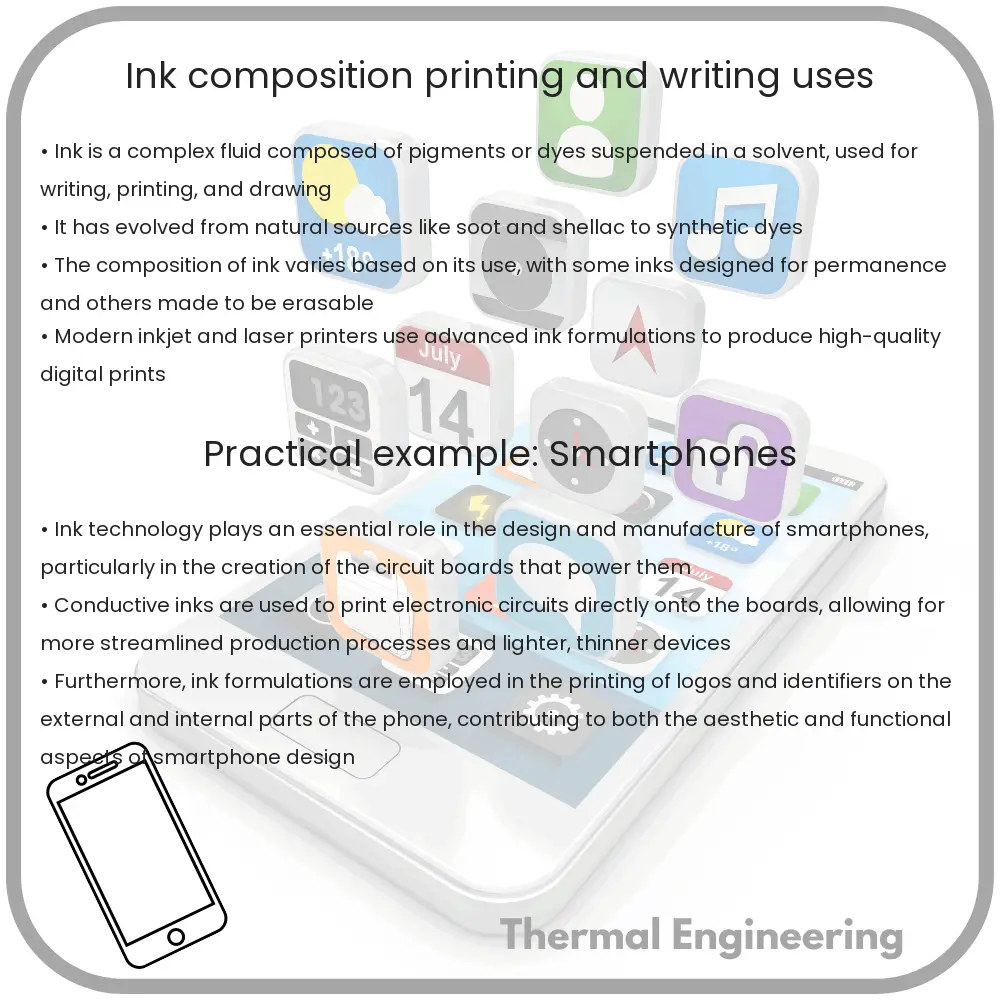Learn about ink’s composition and its diverse applications in printing and writing, highlighting its chemical components and practical uses.

Understanding Ink: Composition and Its Uses in Printing and Writing
Ink is a common but complex mixture used extensively for writing, printing, and various industrial applications. Understanding the composition of ink and how it functions in different uses can enhance our appreciation for this everyday material.
Composition of Ink
At its core, ink consists of a pigment or dye that provides color and a solvent that carries the pigment. Various additives and resins may also be included to improve performance depending on the specific application.
- Pigments and Dyes: Pigments are insoluble substances that provide color to ink. They are preferred in applications requiring high color stability and opacity. Dyes, on the other hand, dissolve in the solvent, offering vibrant colors but often with less resistance to fading and water.
- Solvents: The solvent aids the flow of ink and can vary widely. Water-based solvents are commonly used in inks for writing to ensure safety and ease of use, whereas organic solvents are found in some printing inks due to their quick drying properties.
- Resins: Resins are added to ink to bind the colorants to the substrate and affect the ink’s durability. They play a crucial role in determining the gloss, adhesion, and abrasion resistance of the final ink film.
- Additives: Various additives may include surfactants, fungicides, and defoamers. These contribute to the ink’s properties such as viscosity, drying time, and resistance to environmental factors.
Uses of Ink in Printing
Ink used in printing is specifically formulated to work with different types of printing technologies and materials. Each formulation considers factors like adhesion, color quality, and drying speed.
- Offset Printing: In this common method, the ink is transferred from a plate to a rubber blanket and then to the printing surface. The ink used in offset printing must be able to adhere properly to both the plate and the final material.
- Digital Printing: Digital inks must be formulated to function correctly with digital print heads, providing precise control over droplet size and placement. These inks often have to rapidly set or cure upon contact with the paper or material.
- Screen Printing: Screen printing inks are thicker and more viscous to pass through the mesh of the screen. They must also adhere to a variety of substrates, from fabric to plastic and metal.
Uses of Ink in Writing
Writing inks are designed to provide a smooth, controllable experience, whether used in pens, markers, or brushes. Their composition influences not only the writing quality but also aspects like permanence and ease of use.
- Fountain Pen Inks: These inks are typically water-based with dyes for color, facilitating an easy flow through the pen nib but often at the expense of water resistance.
- Gel Inks: Gel inks combine the properties of oil-based and water-based inks. They contain pigments suspended in a water-based gel, providing vibrant colors with greater resistance to smearing and fading.
- Permanent Markers: Permanent marker inks generally include a solvent-based carrier, dye or pigment, and a resin to fix the colorant to the surface permanently, making them suitable for use on various non-porous surfaces.
From preserving historical documents to creating striking visuals in print, inks play a critical role in various aspects of daily life and industry. The development of ink technology continues to evolve, driven by the need for greater ecological safety, enhanced durability, and improved performance.
Conclusion
The complex chemistry of ink is what allows us to leave lasting marks — from the delicate lines of a handwritten letter to the bold graphics of a billboard. By understanding more about ink’s composition and its tailored use in different applications, we can better appreciate and leverage this versatile medium in both artistic and practical contexts.